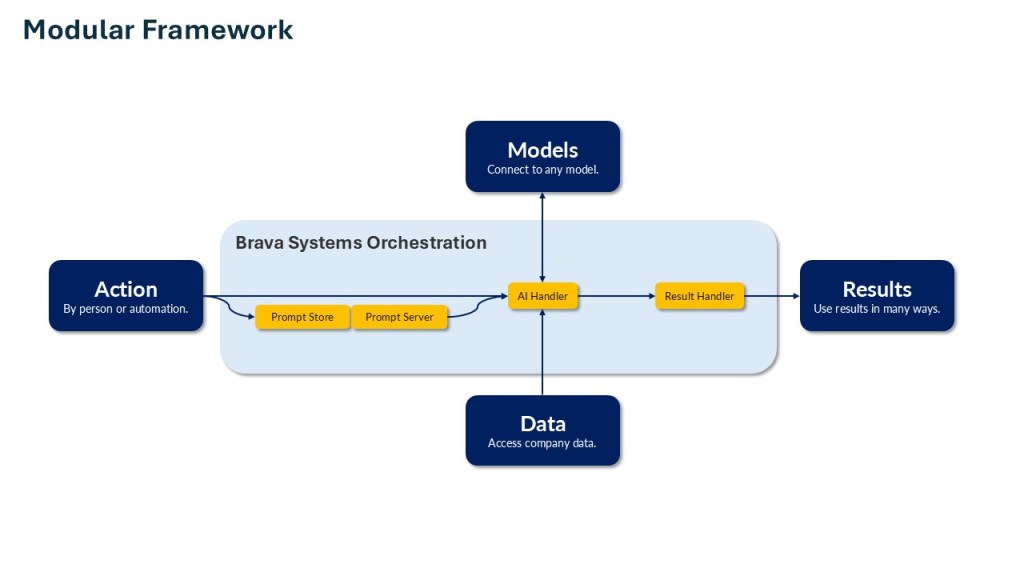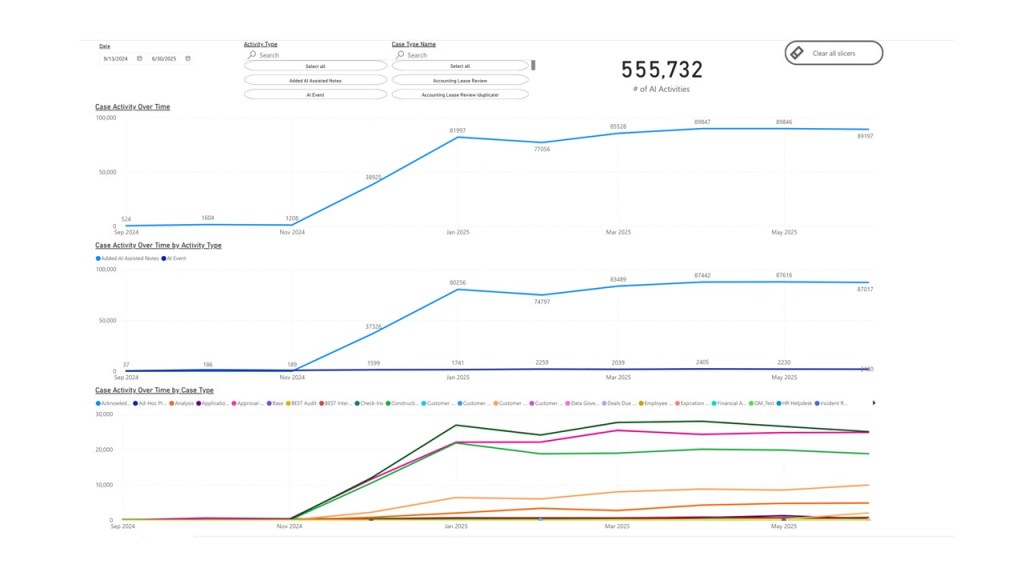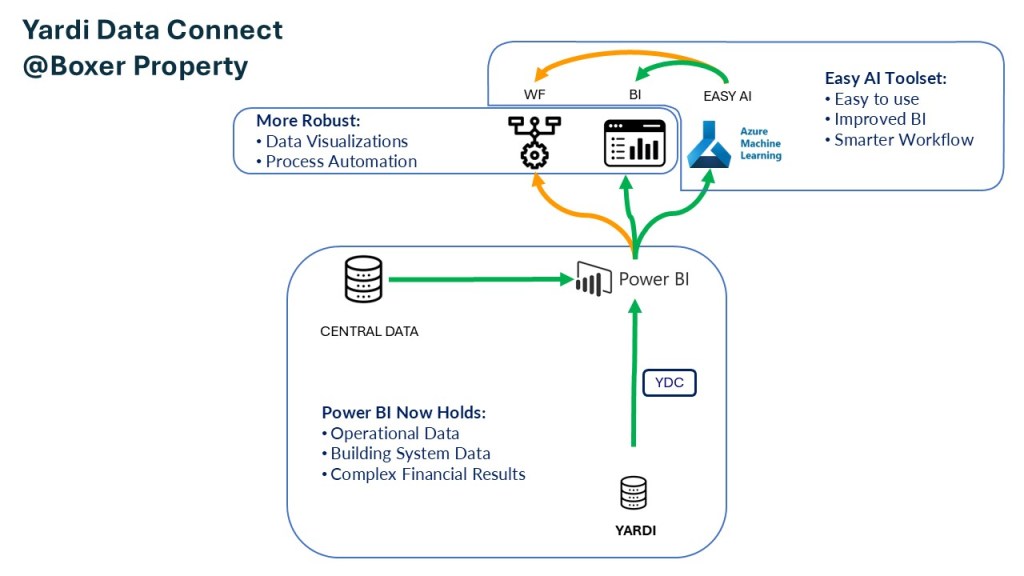CPE Asks: Is AI the Best Strategy for Operational Efficiency?
Boxer Property's Justin Segal on the value of integrating AI into daily work processes to allow employees to focus on human interactions.
AI is a constantly evolving landscape, and it’s becoming increasingly apparent that to stay relevant in the commercial real estate market, companies must adapt and develop their AI capabilities.

The new technology is fueling both optimistic and fearful stances, and it wouldn’t be the first time in history when technological advances threatened (unavailingly) the employment pool.
Using AI in daily operations can help free employees to spend more time on creative problem-solving, interpersonal relationships and non-digital interactions, believes Justin Segal, president of Boxer Property. Basically, AI has unlocked a new employee profile, enabling his company to put aptitude and people skills above experience.
Today, Boxer manages 192 commercial properties across 17 markets, encompassing more than 15 million square feet and 8,054 tenants. How much is AI changing the status quo in property operations? Here’s what Segal told Commercial Property Executive.
What specific AI-driven tools or platforms have yielded the most accretive results for your commercial office portfolio so far?
Segal: Yardi, which we have been on for over 25 years, remains the bedrock of our CRE-specific tech stack. In addition, Boxer relies on Brava Systems to combine corporate data, particularly from Yardi, with advanced AI, and integrate the results into everyday workflows. This tool also allows connecting to various PaaS platforms and AI models, and serves as a front-end for users. Using Brava as an AI App creation and orchestration platform in conjunction with Yardi data has enabled every department to use AI.
For more complex activations, we tend to use systems like Azure AI Foundry, which is integrated using Model Context Protocol and Semantic Kernel, and deployed through Brava as a seamless front-end and one-stop shop for users.

In a previous statement, you defined the AI integration with your daily operations as “elegant.” What did you mean by that, and what are the hallmarks of such an approach?
Segal: Elegance refers to the natural flow in which someone encounters AI in the course of their daily work. Users should not have to open another application, go somewhere else, think of a prompt, paste in information or execute additional steps to use AI—it should just be there when needed, pick up the data it needs from context, and deliver the results in a natural place.
A useful analogy might be clicking on a phone number in a mobile app to make a call, rather than having to write down the number, open another device and punch in a number to make a call. Similarly, AI should be able to activate without a person remembering, such as by an automatic trigger that executes an AI process or a scheduled activation. These approaches make sure the systems are used, without burdening the users with the need to remember or to click through extraneous steps.
How did you get to this level of AI adoption? Tell us about the process of implementing AI and automation at Boxer Property.
Segal: We began in earnest in 2017, developing integrations to AWS and Watson for things like news gathering, image recognition and task management. As the technology got more accessible, the pace picked up dramatically.
Data availability, largely through Yardi Data Connect, and model availability such as through Azure AI Foundry, made 2024 a year of exceptional growth and adoption. Once we rolled out Brava Systems as the orchestration tool, AI activations increased dramatically. In September of 2024, we were running at less than 1,000 AI activations per month. Now we are approaching 90,000 activations per month.

In what ways has the integration of AI changed the roles or required skill sets of your property management teams?
Segal: AI allows individuals to spend more time on creative problem-solving, interpersonal relationships and non-digital interactions. There is less focus on repetitive tasks that take years to learn and unlearn, and more room for innovation and exploration. A good analogy is like a chef having help with prep, serving and dish washing. That support doesn’t make them less of a chef, but rather gives them more time to embrace and explore their craft.
On a company level, we have had to develop capabilities in data management, decision architecture and solution design, but those costs have been more than offset by savings and other gains. AI has also allowed us to hire more for aptitude and people skills than experience and has enabled lateral movement around the organization.
How do you balance automation with the need for human judgment, especially in tenant relations and conflict resolution?
Segal: Human brain cycles are a valuable and expensive resource. They make a lot more sense in some places than in others. Using human brainpower as a basic data store, for example, is generally not useful or worthwhile—we can instead write things down, electronically save content or data, or document processes and policies. We similarly decide when and where to use human intelligence (HI) as opposed to artificial intelligence.
In many cases, HI provides the decision layer or at least a validation layer, coming after AI does its thing. HI is the gold standard for communication, but is increasingly less relevant for data processing, pattern finding, research and many otherwise routine or laborious processes. The balance will continue to change, but humans will continue to have an important role, just as we did after the agricultural revolution and the industrial revolution.
What data sources have proven most valuable for training your AI models, and how do you ensure both data quality and security?
Segal: We have been dedicated to data preservation for decades and have hundreds of millions of data points relating to operations, tasks, projects, documents and, of course, Yardi data. This content is tagged with normalized metadata and is an unparalleled data set for model training. It works for things like solution recommendation, language generation, multivariate regression to predict known outcomes and chat completions.
Data quality and security are each separate issues. Data quality requires a strong data dictionary and taxonomy, along with a culture of data stewardship and effective data governance processes. These are easy words to say, but hard outcomes to achieve. They require executive leadership and dedication to processes. In these areas, our global teams have saved the day. We could not afford to keep our data quality up without our international team members.
Security is another discipline altogether. It requires team, tools, resources, culture and a certain discipline that focuses on the long term. One of our best approaches in this area is to create a secure pipeline and safe infrastructure and then use it for many different things. For example, once a secure method is enabled for document content extraction, it can be used just the same for leases, loans, communications, deal offerings or anything else, without having to recreate the basic security features.

Has AI helped you identify new revenue streams or cost-saving opportunities that were previously hidden?
Segal: AI allows us to massively increase our throughput by avoiding low-value uses of time. There is no amount of telling people to ‘have a sense of urgency’ that can come close to the impact of deploying even basic AI tools.
I can’t imagine competing without things like content extraction, document summary and language generation. The results show up in the number of deals we can analyze, the speed of responding to customer requests, collapsing the leasing cycle and the number of construction projects we can effectively run, among other things.
Boxer has succeeded at running its own collaborative space/coworking platform, providing third-party property management services at scale, adding asset types, deploying large global teams, and even spinning off and entering new businesses. Although AI is not solely responsible for any of these, it is a necessary feature for our success in these areas.
READ ALSO: There’s More AI in Investment Than Meets the Eye
What lessons have you learned about scaling AI solutions across a diverse property portfolio?
Segal: The big value is not in siloed, performative, splashy AI solutions that only do one thing. The real value is in gradually turning up AI capabilities that are suffused throughout the everyday work across the entire portfolio. Companies should resist the siren song of single-use tools and focus instead on deploying configurable tools incrementally. An incremental approach also helps teams and processes adapt more easily and avoids costly mistakes.
Humans will continue to have an important role, just as we did after the agricultural revolution and the industrial revolution.
—Justin Segal, President, Boxer Property
To what extent has AI influenced your approach to predictive maintenance and operational efficiency?
Segal: Predictive maintenance is a bit of a red herring, as good old preventative maintenance is an effective enough tool when applied with discipline. Many companies fetishize predictive maintenance because they actually don’t do basic preventative maintenance and are hoping to magically skip that step.
AI is the best medicine for operational efficiency, though. It is particularly good at eliminating the drag of ‘remembering, reminding, asking and answering’ that weighs down so much of our work lives. We always used the expression ‘It’s a person, not a process’ in the context of working with global teams, but recently have found ourselves flipping it around to identify work that it’s better handled by a system than a person.
What emerging AI technologies or trends are you most excited about for the commercial real estate sector?
Segal: Even if technology froze in time now, we would still have years of work to do to properly utilize the current offerings. That said, we are most excited about ‘text to’ options, where the instigating text is generated by an LLM rather than a person.
For example, ‘text-to-API’ allows a natural language instruction to generate an API call in proper format for various systems and execute it with an appropriate payload. Similarly, ‘text-to-U’ allows for html and data visualizations to be generated as an on-the-fly interface. In both cases, the instigating agent could be a person typing, but they are much more powerful when the text is the output of another AI system.
We are also excited about the Yardi Virtuoso product features and the evolving ecosystem in Microsoft Azure.
CPE is a Yardi Systems-owned brand.







You must be logged in to post a comment.